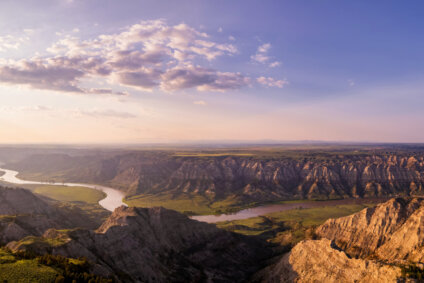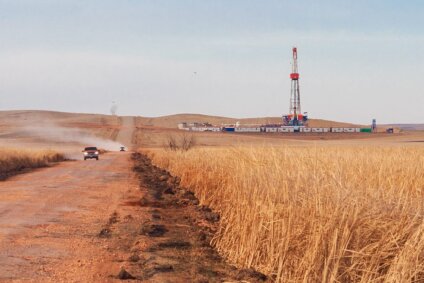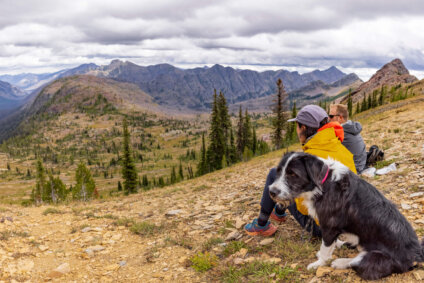History as Our Guide: Forest Jobs and Recreation Act
In the final installment on previous WSA legislation, we look back on a bill that would have settled the fate of 12 WSAs
“History as Our Guide” is a three-part series looking back on past efforts by Montanans to find long-term solutions for public lands currently protected as wilderness study areas. These efforts involved public meetings and produced balanced proposals for increased protection in some areas and decreased protection in others. In contrast, Sen. Daines and Rep. Gianforte are currently pursuing a wholesale removal of protections without taking any input from Montanans who benefit from, use, and cherish these areas.
Currently, Montana has 44 wilderness study areas. Seven of these are managed by the U.S. Forest Service (USFS) and were created by a bi-partisan act of congress in November of 1977. The remaining 37 are managed by the Bureau of Land Management (BLM) and were created at various points in time by this agency, not by Congress, as a result of public input and extensive field research.
In 2004, the late Senator Conrad Burns appeared on a panel before a large audience in Deer Lodge. He sat between Tony Colter, plant manager for Sun Mountain Lumber, and John Gatchell, who was the conservation director for Montana Wilderness Association at the time. The topic was a long-term management plan for the Beaverhead-Deerlodge National Forest, the largest forest in Montana. Among the questions at hand: What should the plan look like? How much recommended Wilderness? How much suitable timber base?
The panelists spoke at length without finding much to agree on. Eventually, the senator stepped in. He gestured to Tony and John: “You two need to get together.”
With those words, Sen. Burns planted the seeds of the Beaverhead-Deerlodge Partnership, which grew to include five timber companies, four conservation groups, and a wide range of hunting, fishing, and outdoor recreation interests. A few years later, in 2008, the coalition announced a legislative proposal. By then, Montanans had elected Jon Tester to replace Burns. Fortunately, Sen. Tester shared his predecessor’s interest in collaboration among forest users.
__________________________________________________________________________
One of the reasons FJRA didn’t eventually pass was because Steve Daines, first as congressman and later as senator, refused to support the bill.
__________________________________________________________________________
In July 2009, Sen. Tester introduced the Forest Jobs and Recreation Act (FJRA), which combined the Beaverhead-Deerlodge proposal with two more collaborative proposals for the Blackfoot watershed on the Lolo National Forest and the Yaak Valley in the Kootenai National Forest. He announced the legislation at RY Timber in Townsend flanked by wilderness outfitters, loggers, mill operators, hunting and fishing advocates, and representatives from conservation organizations, including Montana Trout Unlimited, National Wildlife Federation, The Wilderness Society, and MWA.
Importantly, each proposal had been the subject of numerous public meetings and represented a compromise among forest users. Once introduced, Sen. Tester held additional public meetings in Dillon, Deer Lodge, Missoula, Libby, and other communities that resulted in changes to the legislation.
Among other outcomes to increase timber harvest and protect over a million acres of public land, the legislation addressed 12 wilderness study areas comprising nearly 400,000 acres, of which 115,000 acres would have been protected as Wilderness, 129,000 acres designated as a recreation area, 55,000 acres kept in WSA status, and the remaining 100,000 acres opened to various levels of resource development.
Montanans overwhelmingly supported the overall compromise. A 2009 poll reported that 73 percent of Montanans supported the bill following its introduction to the Senate.
In 2010, Senate leadership attached FJRA to a year-end appropriations bill, a large legislative package that was narrowly defeated in the Senate. The bill was re-introduced in 2011 and in 2013, when the legislation received bi-partisan approval in the Senate Energy and Natural Resources Committee. Over the course of six years, the bill was amended more than 20 times in response to feedback from Montanans and other lawmakers.
One of the reasons FJRA didn’t eventually pass was because Steve Daines, first as congressman and later as senator, refused to support the bill.
Over the last several months, Sen. Daines has said repeatedly that Congress has done nothing to resolve our WSAs – a baseless claim, given that he stood in the way of a bill that would have settled the long-term management of 12 WSAs.
Sen. Daines has been making this false claim in support of legislation he and Rep. Gianforte have introduced that, in total, would eliminate 29 WSAs, comprising 800,000 acres. This lopsided legislation is supported by just 11% of Montanans, according to a poll the University of Montana released in May. This dismal level of support can perhaps be attributed to the fact that neither of them has held a single public meeting or hearing to discuss their proposals, preventing tens of thousands of Montanans who use these WSAs from having a say in their future.
If our junior senator and representative want to actually resolve our WSAs in a way that Montanans can support, they would do well to follow the example of Montanans who built numerous proposals over the years that represented a thoughtful compromise between public land users and, therefore, earned statewide support.
– Gabriel Furshong, former MWA deputy director

Stay Connected
"(Required)" indicates required fields


